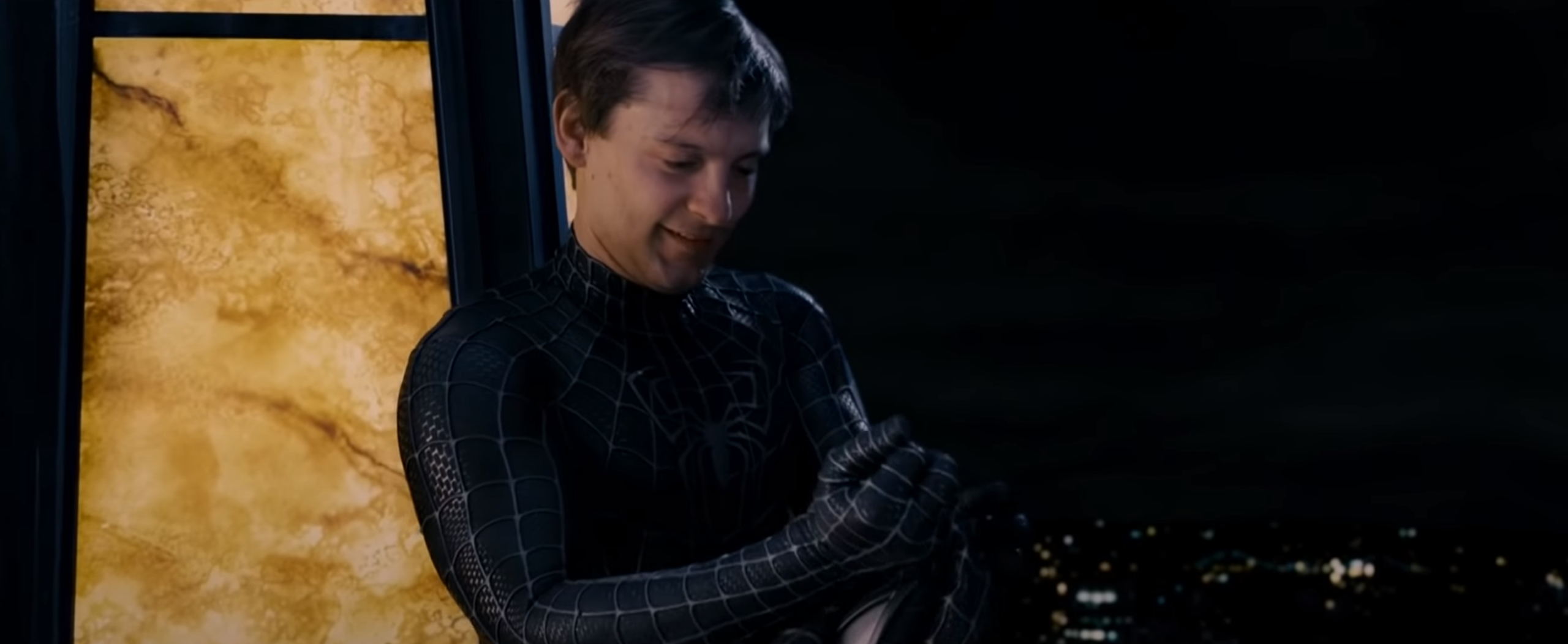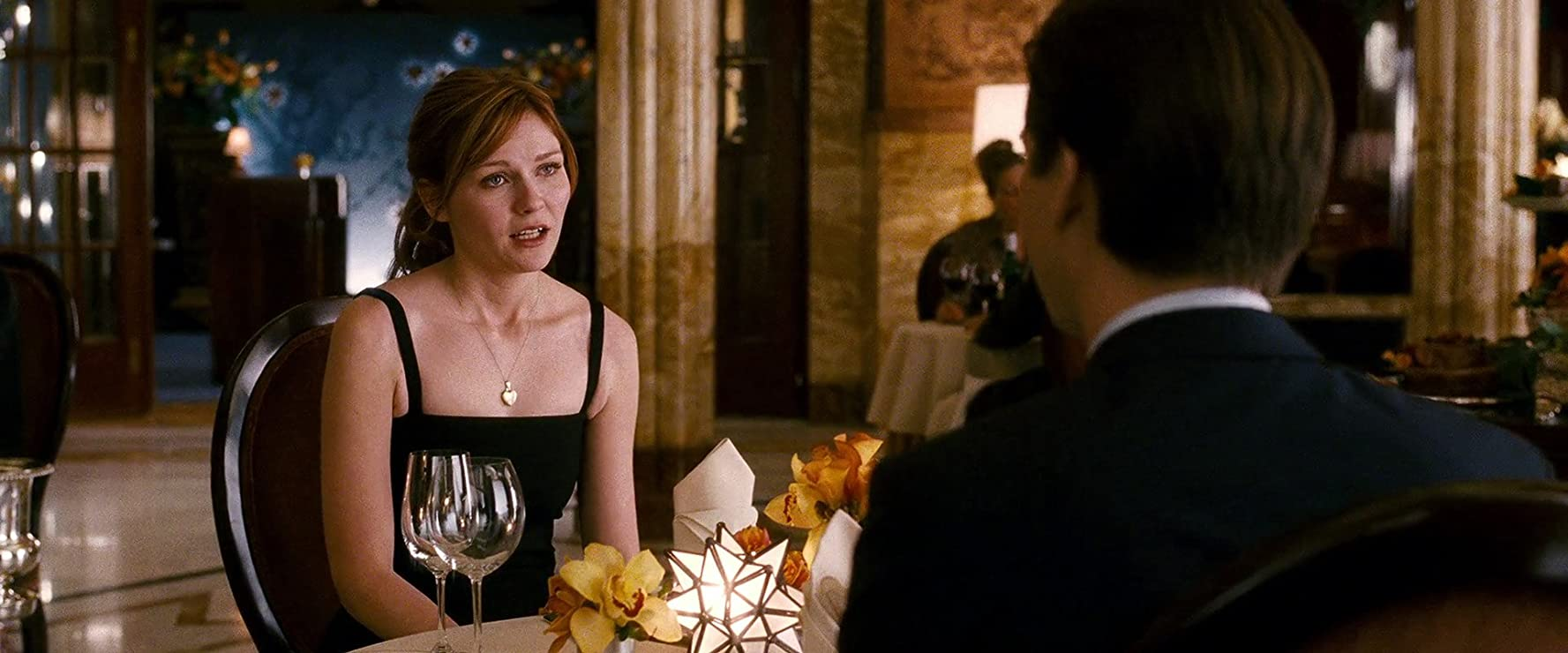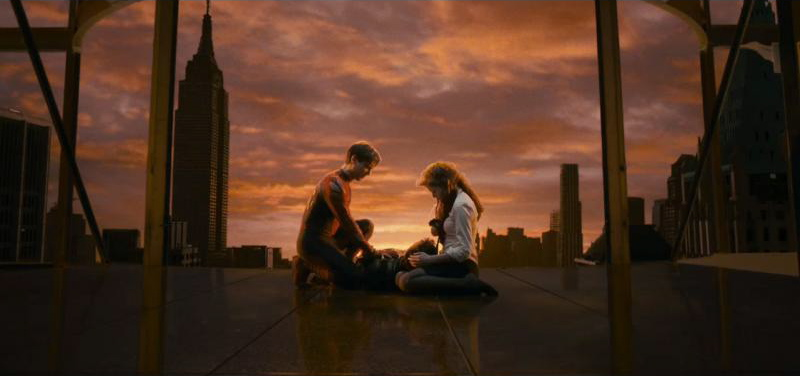Oh, Peter Parker. How did we get from there to here?
Much has been said about the shocking denouement to Sam Raimi’s Spider-Man trilogy, a series that in many ways helped shape the cinematic superhero boom we’re still living in today. It killed Spider-Man its future successors would mock its silliest moments.
It should be no surprise to learn that Spider-Man 3 was a bad movie at release and it continues to be a bad movie watching it now, over a decade later.
But while we all share dance scene gifs and chuckle to ourselves that maybe Spider-Man 3‘s biggest failures are that it’s cringe, that there are too many villains, that maybe it was Sony’s fault, maybe it was Raimi’s fault, that it was this or that or the other, the film’s most fatal flaw remains readily apparent all these years of reflection later. Spider-Man 3 is obsessed with itself. And it has no idea what to do with that compulsion, rendering its ceaseless riffing as a shallow rejoinder to the heart that came before it.

Yet, at its core, this is also what Spider-Man 2 did, building on moments and themes from its progenitor ” so how did it succeed so sublimely where Spider-Man 3 failed? Because only one of these movies actually understands what repeating what came before ” thematically or stylistically or even contextually ” actually means. Spider-Man 2‘s ceaseless returns to the original movie’s themes about power and the people who wield it works so well because it reframes those struggles beyond the immediate circle of Peter, his friends, and his foes, and contextualizes it the grander scale of the movie itself to become a commentary about power structures in society. It builds on and intensifies the themes to show them in a new context that in turn reflects in the new context Peter finds himself in as a friendly neighbour to all of New York, not just Mary Jane.
Spider-Man 3 repeats scenes and ideas but it never recontextualizes or adds to them. In just simply repeating those moments without wrestling with what it means paradoxically, it ends up saying something about them: that the movie is afraid to push itself in the ways its predecessors were. “This worked before, so let’s do it again, right?” From beats as textually big as Harry’s will-he-won’t he Goblin arc and Peter’s struggling relationship with Mary Jane to something as simple as contrasting the scene where Aunt May gives Peter $US20 ($29) for his birthday in the sequel and her giving away her engagement ring to Peter in this film is emblematic of this. Spider-Man 3 has no idea what to do with its characters, and yet it is obsessed with their on-screen pasts.
[referenced url=”https://gizmodo.com.au/2020/07/spider-man-2-is-a-perfect-sequel/” thumb=”https://gizmodo.com.au/wp-content/uploads/2020/07/15/cba4pd1iqnuzpbywklrg-300×169.png” title=”Spider-Man 2 Is a Perfect Sequel” excerpt=”So many follow-ups to successful movies stumble as they chase spectacle at the cost of forgetting what really made their predecessor work in the first place. Sam Raimi’s sophomore Spider-Man movie aimed much higher and bigger than his first movie ever could, in part because of just how keenly it…”]
Obsession really is the overarching theme of Spider-Man 3, textually and in its own half-hearted commentary about its predecessors. But in failing to understand those obsessions ” or even the toxicity of the obsessions of its characters, even with the least subtle symbolism it has in its playkit in the form of the alien symbiote suit that drives the movie ” Spider-Man costs both the series at large and its primary trio so much. Harry’s self-destructive downfall into his own father’s thirst for power is rendered moot by being turned into a case of him whacking his head so hard 20 minutes into the movie that his impulses become a trauma-induced flipped switch out of his control. Peter’s own struggles about separating his life in and out of the mask are brought to the fore again, but in giving him an “out” through the symbiote, they’re never interrogated.

MJ in particular is gravely mistreated the most by this repetition. For the third time in a row her arc is to be frustrated that Peter isn’t paying attention to her or her desires, but the story never actually builds on that frustration. Instead, yet again, she becomes a trophy to be fought over by the men in her life, robbed of any agency as her concerns are superseded by Peter falling under the sway of the symbiote suit’s excesses. Her completely understandable decision to break up with him would be completely understandable if she were allowed to make it herself: instead, she’s forced into playing pawn to Harry’s revenge campaign against Peter ” completely unnecessarily so, given Harry’s heel-turn switch to hero for the final battle!
But while the film’s treatment of MJ is heinous, its biggest failing of all is saved for its protagonist. In focusing so much on re-iterating what came before, ironically, Spider-Man 3 forgets its origins: Peter Parker was just as complicit in the toxic power structures of the world he lives in as his antagonists were in Spider-Man. Peter was, in some ways, quite an awful person well before an alien pile of goop turned into a killer costume and gave him emo hair. Tracking the arc of the way he strings MJ along with his feelings for her and the relationships she has that he harms by doing so (especially in Spider-Man 2, remember J. Jonah Jameson’s son, never to be mentioned again) across the movies is one thing, but even in this one, Peter is presented as obsessive of MJ as his.

The entire opening of the film is Peter fawning to people in the theatre where he’s watching MJ perform that she is his girlfriend. Throughout the movie, whenever she brings up the anxieties she has about her performance or her career, Peter doesn’t support her needs, but instead extols his own, repeatedly telling her he doesn’t need to listen to her because he’s already been through the same thing as she has in becoming Spider-Man. The moment Peter gets the symbiote suit in Spider-Man 3 is meant to be the turn for the audience that suddenly, he has this power he never had before, a darker impulse. But Raimi’s Peter always had that impulse, always had that power, especially in his will-they-won’t they relationship with MJ. But because Spider-Man 3 is satisfied with simply re-litigating that will-they-won’t-they drama, Peter’s failings are exonerated, because the movie never actually interrogates its own hero’s attitude.
In my recent re-review of Spider-Man 2, I held up that movie’s train sequence as the ultimate example of its wider thesis: the moment of catharsis, not just because the hero does the thing and saves the day but because it is reflective of everything Spider-Man 2 wanted to say about itself and its characters distilled into a singular moment. If that train sequence is its essence, then Spider-Man 3‘s is, of course, The Dance. But not for the reasons you remember it for.

Yes, it’s excruciating to watch Tobey Maguire jazz hands his way through it. Yes, the hair flip is silly. Yes, it is, as we have joked and ribbed ever since, absolute cringe. But it is not this embarrassment ” that our awesome hero, the spectacular Spider-Man, is reduced to this dancing mockery ” that emblifies Spider-Man 3 at large. It’s that this is the moment Peter Parker sinks to his cruelest, most vindictive low, even lower than Spider-Man‘s catalyst for the almighty words of “With great power, comes great responsibility.”
There’s the vile torment to kick MJ while she’s down, gigging as a singing waitress (a job we see her taking out of indescribable shame). Then there’s the viler torment that he does it while wielding Gwen Stacy ” another female character this movie introduces only to immediately rob her of agency and set her as a trophy for two men to compete over ” as an all-dancing cudgel. It’s uncomfortable to watch not because it’s cheesy, but because it is horrifying.
[referenced url=”https://gizmodo.com.au/2020/07/sam-raimis-spider-man-is-a-cautionary-tale-about-the-power-men-wield/” thumb=”https://gizmodo.com.au/wp-content/uploads/2020/07/08/tgaap7vpvjplvg1ywoe1-300×169.png” title=”Sam Raimi’s Spider-Man Is a Cautionary Tale About the Power Men Wield” excerpt=”We, and Peter Parker, have heard it a zillion times before: with great power, comes great responsibility. The watchwords of Stan Lee are suffused into the very fabric of who Spider-Man is as a character, and how Sam Raimi brought him to the big screen in 2002 is no exception….”]
The vital fact about the symbiote that the story often forgets after Doctor Connors first notes it is that it does not create negative thoughts and attributes, but only enhances what was already there. We’ve seen Peter be this self-centered, this manipulative, this gaslighting, to MJ before. ” all the suit does is crank that up to eleven. But Spider-Man 3 never actually acknowledges that. The shock that bolts Peter out of realising how badly he’s hurt both MJ and Gwen in this moment isn’t the trauma clear on their tearful faces as the latter apologizes to the former, it’s that underneath his suit he’s still wearing the symbiote costume. We are left to blame the symbiote’s darkness alone and asked never to confront Peter’s.
In the end, Peter learns nothing. Sure, his best friend sacrifices himself for him, in the final Sandman/Venom battle, but the fact that Peter does not realise his own fault in that sacrifice renders Harry’s death meaningless. “I’ve done terrible things too,” Peter tells Flint Marko before letting him fade away, but the movie never explicitly interrogates what those things are: Are they what he did under the symbiote suit’s influence or everything that came before that? We’re left only to imply the former, given the movie concludes with him being rewarded with MJ’s affections once more.

Looking back on the Spider-Man trilogy, nearly two decades after it first began, it is remarkable to see a journey that began so extraordinarily certain in its past through decades of comic book source material, through the way it nailed those themes and then echoed them ever louder, end so profoundly empty. As with Harry and the symbiote, its obsession with what came before is its greatest undoing ” because once you peel away the mask, all that’s left are the messy, terrible people underneath. And Spider-Man 3 has nothing to say to what that actually means.
